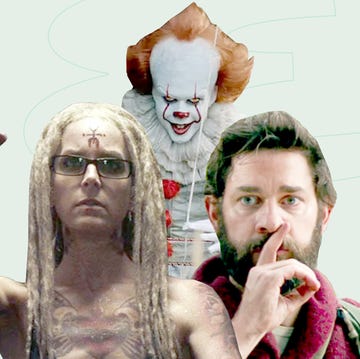Beetlejuice gave me nightmares as a kid. After the demon trickster (played by Michael Keaton) breaks out of his coffin in the 1988 film, he transforms into a giant snake with a human head, then flashes his salivating fangs at a little girl (Winona Ryder). Next, Beetlejuice terrorizes the child by sewing her mouth shut and threatening her into marriage. Gross!
And yet the 1988 horror-comedy was a critical and commercial success, turning Keaton and Ryder into stars and cementing director Tim Burton as one of the wackiest dudes on the planet. But a funny thing happened over the past thirty-six years. As Burton resurrected his hit film for a sequel, Beetlejuice...softened. That guy I described above sounds very much like a villain, right? Well, much like any beloved character who transformed into mineable IP (*cough* Deadpool *cough*), Beetlejuice became another lovable, foulmouthed antihero. How did we end up here?
In the original film, Keaton’s character is a kind of Rumpelstiltskin on cocaine—bound by an unexplained curse that can either summon him to the mortal world or send him back to the afterlife if you say his name three times. Beetlejuice can only free himself to wreak havoc on the mortal world by marrying a human. It’s how he’s able to exploit goth teen Lydia Deetz (Ryder) before she’s able to trap him in the afterlife for good (or so she thought). He is also very, very horny. At one point in the film, a magical brothel is placed in his path to impede his evildoing—and the scheme actually works. Watching the film thirty-six years later, I’m amazed that Burton’s second-ever film was even made.
Although Beetlejuice is a crude and perverted deviant, Keaton’s cheeky playfulness won audiences over. Fans viewed the character less like a demon that would jump out of the screen to smack you upside the head and more like an uncle who plays pull my finger pranks. According to Mars Attacks! screenwriter Jonathan Gems, an absolutely bonkers sequel idea in the early nineties (titled Beetlejuice Goes Hawaiian) sought to make the character’s heroic transformation permanent. The idea saw Beetlejuice summoned by the Deetz family to ward off an ancient Hawaiian Kahuna on their new resort, before winning a surfing contest with his afterlife magic. Even though the script never made any progress, it’s clear that Keaton’s charisma somehow played as “funny” more than it did “demented nightmare.” And in the new sequel, you could convince me that the antihero is ready to become an Avenger.
Beetlejuice Beetlejuice centers on Lydia, now a mother of her own goth teenager (Wednesday’s Jenna Ortega, obviously) and still scarred from when Beetlejuice almost made her his child bride. She’s in a bizarre relationship with a greedy and manipulative fiancé (Justin Theroux), while the trickster is now a customer-service operator in the afterlife who pines for Lydia as the one who got away. An easy fix, right out of Joker’s playbook: Make someone else more evil, and then paint Beetlejuice as a guy who just needs a hug.
When even more ghostly entities threaten the mortal world—such as Beetlejuice’s vengeful ex-wife (Monica Bellucci)—Lydia can’t help but call on Beetlejuice once again, as if she were Princess Leia reaching out to Obi-Wan in Star Wars. Help me, Beetlejuice, you’re my only hope! On many occasions throughout the film, he seemingly helps her out of the kindness of his own heart. Even when he inevitably seeks to trap Lydia into marriage once again, I caught myself thinking, Maybe she SHOULD marry Beetlejuice.
What the hell happened? Well, it has a lot to do with Keaton. He’s become the king of revival sequels ever since he reappeared as Batman in The Flash—a cameo so desperately needed that he was probably the sole reason anyone even went to see that film in the first place. Keaton’s portrayal of another cherished character, in Beetlejuice Beetlejuice, similarly makes it feel like no time has passed between the two films. “I’m the ultimate cake-and-eat-it-too guy,” Keaton recently told The New York Times. “People say, ‘Well, it doesn’t work like that.’ And I say, ‘It’s worked pretty well for me.’ ”
Keaton’s turn in the sequel is the ultimate “cake-and-eat-it-too guy” performance. One minute he’s scaring you with a deranged baby version of himself, and the next he’s making you think I wish Beetlejuice were my husband! as you swoon to “MacArthur Park.”
I’d say it’s surprising, but the only shocking thing about Beetlejuice’s transformation into a hero by the end of the film is how easily he wins you over. You know what? Three cheers for Beetlejuice! Oh wait, no—!













